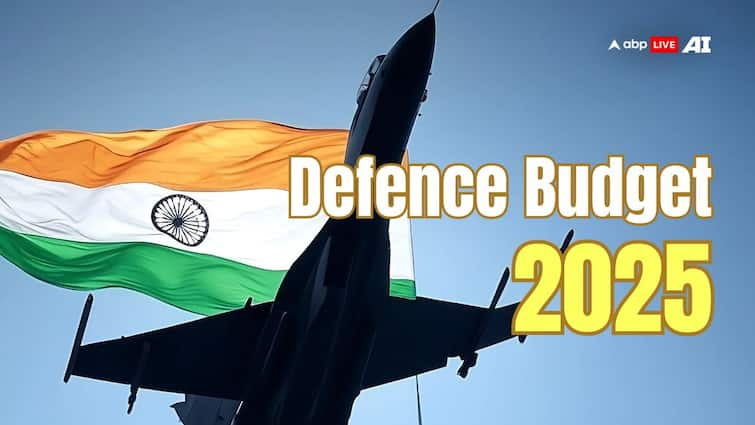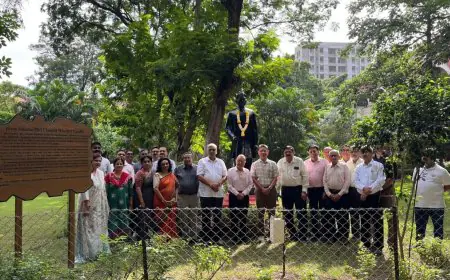Budget 2025 Expectations: Defence Sector Seek Increase In Allocation, R&D And Infrastructure Push
Budget 2025: India’s pursuit of self-reliance goes beyond indigenous defence production; it embodies a comprehensive strategy to reduce dependence on foreign powers, secure national interests, and strengthen the economy. With the 2025-26 Union Budget on the horizon, industry leaders expressed their opinion on what they expect from Finance Minister Nirmala Sitharaman this time. The finance minister will present the Union Budget for the fiscal year 2025-26 in the parliament on February 1, 2025. Stepping Up Infrastructure Spending Kiran Raju, CEO & Co-Founder of Indrajaal, said, "As India looks ahead to Budget 2025, there’s a lot of focus on boosting the defence sector and stepping up infrastructure spending while staying true to the idea of Atmanirbhar Bharat. The government is likely to prioritise modernising our armed forces, strengthening border and coastal security, and taking future-ready decisions to propel India to the next stage of progress.” “One area that will help accelerate this shift is drone infrastructure. Many states have already started investing in drone usage and have established drone policies. This will foster innovation. However, the infrastructure to support a high volume of drones is still lacking. Along with strengthening our drone capabilities, the government should also look at strengthening home-grown drone infrastructure. With a stronger focus on Indigenous production, Budget 2025 could mark an important step toward making India more self-reliant and secure in the years to come,” Raju added. Increased Allocations Subbu Venkatachalam, Head of Marketing, Carborundum Universal Limited highlighted that over the last few years, India has successfully navigated geopolitical dynamics. “We have been instrumental in shaping strategic security dialogues in the region. Through a strong focus on self-reliance, we have cemented our position as a global defence manufacturing hub and improved our internal security posture. 2025 as the ‘Year of Reforms’ in Defence will take us further closer to our ambition of Atmanirbharta,” he said. “With the current allocation towards defence expenditure still below the Standing Committee on Defence’s recommendation of 3 per cent, we have ample scope to augment spending for key priorities,” he added. More Pust Towards R&D Significant Allocation Towards Capital Outlay: This will allow domestic companies to bring more innovative technologies into the sector and enable military modernisation at scale, according to Venkatachalam. Incentives For Domestic Production: Expanding domestic production capacity and innovation capabilities is critical to adopting a dynamic military stance while strengthening export potential. This will also encourage domestic players to invest in cutting-edge manufacturing technologies, adhering keenly to globally benchmarked standards. This will promote greater reliability and responsibility in products and platforms, states Venkatachalam. Provision To Intensify R&D Efforts: R&D is a key pillar to attaining self-reliance. Giving a boost to R&D, especially in advanced materials and futuristic technologies, will not only ensure the sector a key advantage but also give a fillip to exports. Increasing budgetary spends on R&D to 15 per cent from the current 5 per cent as recently suggested by DRDO Chairman, will help efficiently evolve defence technologies. This will significantly benefit India, especially in the area of co-developing next-generation aero engine capabilities, he suggested. Allocation Towards Dedicated Facilities For R&D, Testing, And Certification: This will help accelerate development lifecycles, bring down costs, and give impetus to research and innovation in strategic new-age nanomaterials, opined Venkatachalam. Establishment Of CoEs In Research-led Institutions: Investment towards developing the research wings at top-tier institutions will bring in innovation at a faster pace. This will help address a wide range of on-ground challenges, ultimately ensuring the highest standards of safety and protection for our soldiers and military vehicles, said Venkatachalam. ALSO READ: Tight Fiscal Roadmap But Middle Class Seeking Tax Relief, And More — 8 Challenges For 2nd Budget Of Modi 3.0

Budget 2025: India’s pursuit of self-reliance goes beyond indigenous defence production; it embodies a comprehensive strategy to reduce dependence on foreign powers, secure national interests, and strengthen the economy. With the 2025-26 Union Budget on the horizon, industry leaders expressed their opinion on what they expect from Finance Minister Nirmala Sitharaman this time.
The finance minister will present the Union Budget for the fiscal year 2025-26 in the parliament on February 1, 2025.
Stepping Up Infrastructure Spending
Kiran Raju, CEO & Co-Founder of Indrajaal, said, "As India looks ahead to Budget 2025, there’s a lot of focus on boosting the defence sector and stepping up infrastructure spending while staying true to the idea of Atmanirbhar Bharat. The government is likely to prioritise modernising our armed forces, strengthening border and coastal security, and taking future-ready decisions to propel India to the next stage of progress.”
“One area that will help accelerate this shift is drone infrastructure. Many states have already started investing in drone usage and have established drone policies. This will foster innovation. However, the infrastructure to support a high volume of drones is still lacking. Along with strengthening our drone capabilities, the government should also look at strengthening home-grown drone infrastructure. With a stronger focus on Indigenous production, Budget 2025 could mark an important step toward making India more self-reliant and secure in the years to come,” Raju added.
Increased Allocations
Subbu Venkatachalam, Head of Marketing, Carborundum Universal Limited highlighted that over the last few years, India has successfully navigated geopolitical dynamics. “We have been instrumental in shaping strategic security dialogues in the region. Through a strong focus on self-reliance, we have cemented our position as a global defence manufacturing hub and improved our internal security posture. 2025 as the ‘Year of Reforms’ in Defence will take us further closer to our ambition of Atmanirbharta,” he said.
“With the current allocation towards defence expenditure still below the Standing Committee on Defence’s recommendation of 3 per cent, we have ample scope to augment spending for key priorities,” he added.
More Pust Towards R&D
Significant Allocation Towards Capital Outlay: This will allow domestic companies to bring more innovative technologies into the sector and enable military modernisation at scale, according to Venkatachalam.
Incentives For Domestic Production: Expanding domestic production capacity and innovation capabilities is critical to adopting a dynamic military stance while strengthening export potential. This will also encourage domestic players to invest in cutting-edge manufacturing technologies, adhering keenly to globally benchmarked standards. This will promote greater reliability and responsibility in products and platforms, states Venkatachalam.
Provision To Intensify R&D Efforts: R&D is a key pillar to attaining self-reliance. Giving a boost to R&D, especially in advanced materials and futuristic technologies, will not only ensure the sector a key advantage but also give a fillip to exports. Increasing budgetary spends on R&D to 15 per cent from the current 5 per cent as recently suggested by DRDO Chairman, will help efficiently evolve defence technologies. This will significantly benefit India, especially in the area of co-developing next-generation aero engine capabilities, he suggested.
Allocation Towards Dedicated Facilities For R&D, Testing, And Certification: This will help accelerate development lifecycles, bring down costs, and give impetus to research and innovation in strategic new-age nanomaterials, opined Venkatachalam.
Establishment Of CoEs In Research-led Institutions: Investment towards developing the research wings at top-tier institutions will bring in innovation at a faster pace. This will help address a wide range of on-ground challenges, ultimately ensuring the highest standards of safety and protection for our soldiers and military vehicles, said Venkatachalam.
What's Your Reaction?










































